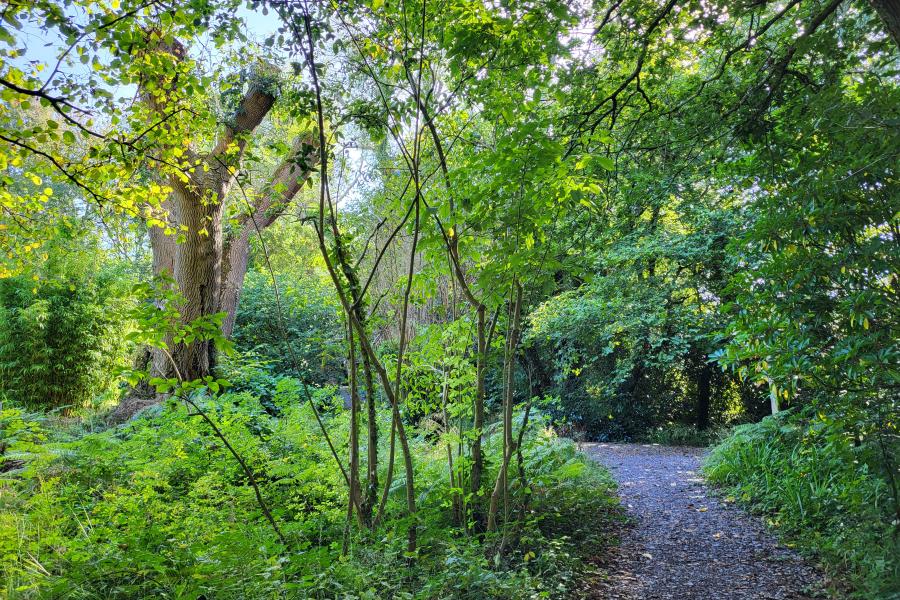A grant of £250,000 has been awarded to Treborth for the restoration and reinvigoration of the existing natural and cultural woodland features, to improve access and provide meaningful learning experiences through a diverse programme of courses, workshops, and training.
Treborth has a long history of working with communities to raise aspirations and improve quality of life. It is a volunteer-led hub for activities which celebrate the breadth and diversity of our rich natural and cultural heritage, and our woodland habitats sit at the heart of our conservation efforts.
The woodland at Treborth Botanic Garden covers approximately 16 hectares and is situated between the two iconic bridges: Menai Bridge (Thomas Telford) and Britannia Bridge (Robert Stephenson) connecting Gwynedd and Ynys Mon. It also lies within the Arfon Historic Landscape, defined by the Register of Historic Landscapes in Wales.
The natural heritage of the site includes a rare, fringing-shore example of maritime, ancient oak woodland exceeding 400 years (SSSI), stands of notable calcareous wet-birch woodland, post-war blocks of oak, ash and sycamore with mature specimens over 175 years old. This block is home to a thriving Forest School site which supports nature-based play, learning and exploration with local partners including Coed Lleol and Nature Keen.

The woodland is also home to breeding red squirrels, an established heronry and an abundance of other small mammals, birds, invertebrates and over 400 species of fungi. It is a living laboratory for community groups, student teaching and research projects.
The funding will enable this unique, precious assemblage to become part of The National Forest for Wales, enhancing its health and resilience and value as a component of a mosaic of Welsh woodland.
To ensure the woodland remains a thriving, safe and resilient ecosystem, the TWIG funded project will enable extensive conservation work to take place, increasing the health and diversity of our unique habitats. It will create a resilient woodland network through the development of low and no-intervention zones and sensitively managed areas.
The project will promote and improve access that safeguards ecological value, remove barriers to access through waymarking, interpretation, path networks, generate capacity for physical and mental wellbeing activities and give people permission to take up space in nature.
The funding will enable exciting, meaningful learning experiences for volunteers, students, and visitors through a diverse programme of vocational opportunities in traditional, practical skills, science communication, research-projects and exploring the woodland for food, medicine, and craft.
The project will create opportunities to discover hidden heritage, learn about the local area, who and how it has been shaped over time.
Natalie Chivers, Curator at Treborth Botanic Garden said, “We are thrilled to have received this grant. Thanks to this support from the Welsh Government and NLHF via the TWIG scheme, we can now establish a programme of vital conservation work and community outreach to support and celebrate our rich natural and cultural heritage”.
Treborth Botanic Garden will be running workshops, courses and training throughout the project, and tours of the woodland to celebrate project milestones. Visit the website to find out more information. https://treborth.bangor.ac.uk/events





